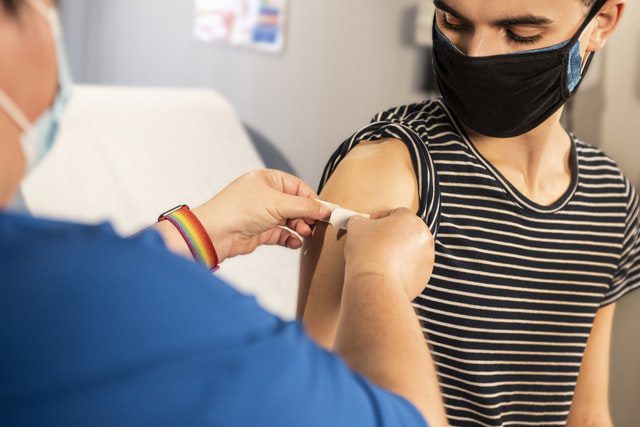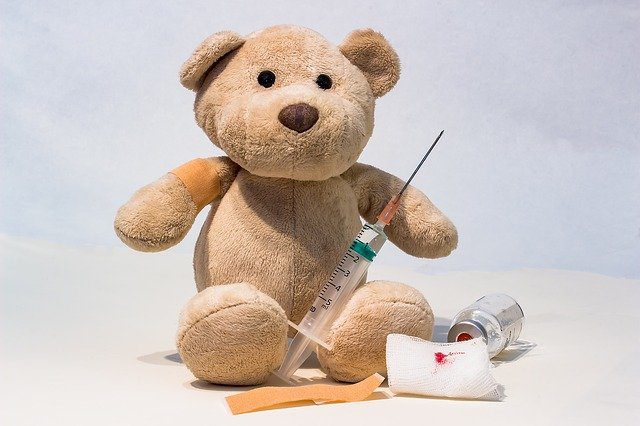
Low Dose Testosterone
When undergoing hormone replacement therapy, taking a low dose of hormones is referred to as microdosing. When your goal is to develop male secondary sex characteristics, low dose testosterone treatment is worthy of consideration.
Although testosterone therapy isn’t exclusive to trans men, non-binary, and transmasculine individuals to increase testosterone levels, it is a very helpful means of hormone therapy that improves transgender health and allows transsexual persons to physically express their gender identity.
It is undoubtedly no small feet to transition from a birth-assigned gender that differs from your gender identity. The transgender population knows this all too well.
Medical technology and hormone treatment have made it possible for transgender persons to alter their hormone levels and alleviate some of the anxiety associated with gender dysphoria.

Let’s Consider Why Low Dose Hormone Therapy Is Beneficial
Hormone replacement therapy alters a person’s secondary sex characteristics. Testosterone therapy will bring about changes in one’s body that may seem overwhelming if not administered gradually. Many transgender patients who were assigned female at birth would prefer a more subtle change in appearance.
Low doses testosterone therapy can offer them just that…subtlety.
The following are some secondary sex characteristics that will become apparent during the course of female to male hormone therapy:
- An increase in facial hair growth
- Increased muscle mass
- An increase in body hair growth
- A deeper voice
- Body fat will be redistributed
- Vaginal dryness
- Menses will cease
- Beard growth
- Hair loss associated with male pattern baldness
A standard dose of testosterone will mean that all these changes will occur rapidly, which may be a bit profound for some transgender men and those who identify as non-binary.
Low-dose testosterone therapy will, however, alleviate some of the anxiety and frustration associated with gender dysphoria as transgender people will finally get a step closer to being and looking like who they truly are.
Members of the transgender population who may benefit from taking testosterone in lower doses include:
- Individuals with prior medical conditions or concerns. There are instances where cross-sex hormones can aggravate existing mental health issues. It is also important to have an honest relationship with your health care professional in order to be well-informed and cautious in your testosterone use.
- Financial obstacles are another reason to consider taking low doses of testosterone. A lower dose will help distribute the costs of your hormone therapy over a longer period, allowing you to plan your financial priorities and security.
Factors To Consider When Deciding On A Dose
A sudden rise in testosterone levels will bring about many visible and concealed effects as well as have greater consequences on your medical transition, especially if you have decided to get gender-affirming surgeries. Consider the following when choosing the right dose during hormone therapy.
- Medical history
- Reproductive health
- Desired surgical outcomes
- Fertility aspirations
Transgender people need to be aware of the side effects and outcomes that their hormone therapy and increased testosterone levels will have.
Routes Of Administration
Some routes of administering testosterone assist low-dose hormone therapy better than others.
Injections
Injections will typically constitute receiving 20 milligrams of testosterone per week either through subcutaneous or intramuscular routes.
Cream
A low dose of testosterone can be achieved by applying around 10 milligrams of testosterone cream a day.
Gel
Based on the concentration of the gel that your health care professional has given you, a low dose of testosterone can be maintained accordingly. For a gel with 1% concentration, your low dose would probably range from 12 to 25 milligrams per day.
Patch
A low dose of up to 2 milligrams of testosterone can be administered via a patch daily.
Proper use of transdermal testosterone gel:
Vaporizable vehicles containing testosterone medicine are included in these gels.
It is advised that you apply this gel in the morning to let the testosterone move into the dermis and get released throughout the day.
It is important to be attentive to not having the gel come into contact with anyone else. Women and children are more susceptible, so be sure to never leave the gel on any surfaces or clothing that they may encounter.
The shoulders and upper arms are the ideal site for the application of testosterone gel and should be kept dry for up to two hours after application.
More On Hormone Therapy
The administration of lower doses of testosterone is an alternative to gender-affirming hormone therapy. Microdosing generally doesn’t make use of blockers as that may lead to abnormally low levels of desired hormones that can be dangerous to transgender health.
Acne is a prevalent occurrence as testosterone levels rise during cross-sex hormone treatment. It may be mild in most cases, but if the condition of the skin doesn’t improve after one year of treatment, prescription medication may need to be obtained.
Some transgender individuals experience an overall improvement in the mood while receiving gender-affirming hormone therapy, others may find themselves experiencing depression and anxiety.
Many health and mental conditions may be impacted by gender-affirming hormones and it is advised that you continuously remain in contact with a medical professional regarding such concerns.
While pursuing your gender identity by receiving endocrine treatment, you can expect to feel like you are going through second puberty.
Those who were assigned male at birth and identified as cisgender, are all familiar with the confusion and discomfort associated with puberty due to a drastic rise in sex hormone levels.
With this sudden influx of male sex hormones, the increase in body hair, facial hair, and muscle mass resulting from all the testosterone vary widely from symptoms of puberty that cisgender women experience.
The goal of endocrine treatment is to reach testosterone levels within the normal male range so that the medical transition from female to male will leave transgender individuals satisfied and content with their gender transition.
TESTOSTERONE
Most means of testosterone treatment today make use of bioidentical substances to alter hormone levels. This simply means that the hormones you will be receiving are the chemical equivalent of naturally-secreted testosterone.
In female to male transsexual persons, cross hormone treatment is used with the goal of masculinization. Some of the most common forms of testosterone prescribed include long-acting testosterone undecanoate as well as testosterone enanthate.
Depending on the desired outcome of the transsexuals receiving treatment, the regiment of the cross-sex hormone treatment may be adjusted. Binary transgender people will most likely desire full virilization, where their treatment will follow principles of male hypogonadism as hormone replacement therapy to achieve testosterone values that fall in the normal male range.
On the other hand, nonbinary folks might desire only partial virilization. In this case, the dose of testosterone will be adjusted to achieve their desired outcome.
When the main goal of transgender patients is related to the body shape and compositional changes, 5a-reductase inhibitors and definitive hair removal can be administered in combination with testosterone. This will produce some masculinizing effects such as muscle growth and mass as well as a deeper voice, but the growth of facial hair on the body will be limited.
A combination of testosterone undecanoate and 5a-reductase inhibitors serves as a great treatment for transgender individuals who have a non-binary gender identity and do not wish to completely conform to a gender binary with regards to their physical appearance.
Nandrolone is an anabolic steroid that can also be used to increase masculinity of the body shape in nonbinary folks in terms of muscle growth, without altering hair growth on the face and body. The use of this steroid is, however, under-researched as a form of transgender medicine. The safety profile of this drug is thus questionable and a correlation between nandrolone and an increased risk of coronary artery disease and cardiomyopathy has emerged. This risk is associated with very high doses of this hormone, which will likely never be reached by appropriate health care regimens.
Monitoring Testosterone Levels
When transgender men are receiving exogenous testosterone, levels may lack fluctuations but they will vary depending on the current dosing interval.
Monitoring hormone levels in non-transgender men are actually much harder because of their rapid and frequent fluctuations.
Sex hormones have binding globulins that bind testosterone to serum proteins. Testosterone that is unbound is referred to as free testosterone.
The bioavailability of testosterone refers to the amount of testosterone that is readily available for use by any cells.
Testosterone that is available for use in this way consists of free testosterone and testosterone that is only weakly bound to albumin.
For accurate monitoring of sex hormone levels in transgender men, the total testosterone levels need to be analyzed. In other words, the bound and the free testosterone needs to be taken into consideration.
The interpretation of the results needs a little more attention regarding transgender men. Many health care facilities report target ranges for various hormones such as estrogen levels and serum estradiol, but these ranges ultimately differ widely between transgender individuals and the laboratory techniques used.
Other challenges concerning the interpretation of lab results in transgender patients include the fact that the patient may still be registered under a gender that does not coincide with their gender identity.
A transgender man, for example, may still be registered as the opposite gender. The normal female range would obviously not be applicable to the interpretation of this person’s lab results.
If a transgender patient is currently receiving hormone treatment, their registration needs to reflect their true gender identity.
Possible Complications Of Masculinizing Hormone Therapy In Transgender Individuals:
- Polycythemia
- Hypertension
- Sleep apnea
- Type 2 Diabetes
- Weight gain
- Acne
- Development of male pattern baldness
- Sexual dysfunction, although erectile function will seem to increase.
As transgender medicine is so advanced at this point, these complications can be avoided by making use of the appropriate health care regimens and going for regular checkups with your physician.



